Mary Anne Yarde's Blog: The Coffee Pot Book Club , page 164
November 18, 2018
#NewRelease — Daughters of War by Lizzie Page #HistoricalFiction #mustread @LizziePagewrite
Daughters of War
By Lizzie Page

An emotional tale of wartime love and sacrifice, inspired by an incredible true story…
As a teenager in Chicago, May always dreamed of travelling the world. So when she meets handsome George Turner, she jumps at the chance to return to London as his wife. Ten years later, May is wondering if she’s made a terrible mistake.
It’s 1914 and war has been declared in Europe. All around, brave young men are being called up to serve. George, banned from conscription himself, has taken to the bottle, and May suspects he’s seeing other women too. She longs for a way to escape.
The chance comes when May meets veteran nurse Elsie, who persuades May to join the war effort. May knows nothing of nursing – it will be difficult, dangerous work, but her heart is telling her it’s the right thing to do.
But then George does the unthinkable and May’s future is put at risk. Will she have to make the impossible choice between duty to her family and her promise to the soldiers on the front line? And can she live with the consequences if her husband goes through with what he’s threatening to do?
A gripping wartime drama, perfect for fans of Soraya M. Lane, Daughters of the Night Sky and Kathryn Hughes.
Excerpt from Daughters of War.
CHAPTER ONE
That term, when the girls were away at school, I was scared I would lose my mind. I had always been prone to melancholy, but by spring of 1914, it was worse than ever. I dreamt of escaping. If I could have run away to do high kicks at the Moulin Rouge or even become a lady librarian, I would have, but both required an energy that had completely deserted me. I wanted only to lie in bed all day long. Was that so wrong? After all – as my mother frequently liked to write in her poisonous letters – I had made my bed and now I had to lie in it. My life was so far from how I had imagined ‘London life’ that the slightest unexpected thing – a bee in the bathroom, a seam in my stocking – could reduce me to fat tears. As for bigger, expected things, my marriage for example, I felt trapped and utterly useless. It was Mrs Crawford, the housekeeper, who called Doctor Grange, and it was Doctor Grange who said I must avoid reading the newspapers. It was true that the news did sometimes send me into a downward spiral: the sinking of the Titanichad. So many people had died, yet here I was: the unfairness of that was enormous. I wished I could have swapped places with any of them. At least then my existence might have had a purpose. It wasn’t just the people I mourned either. It was the ship itself. Unsinkable, they had said. And then it had sunk, just like that. It just showed you. And yet, I felt bad to be so distressed by it. ‘Were you affected personally?’ Doctor Grange asked kindly. When I explained, ‘Not personally, no, but…’ he gave me a severe look. ‘Stop reading. You have too many books,’ he advised looking around my room, ‘and you don’t take enough activity.’ He snapped his case shut.George wasn’t interested in helping me. To be fair, I wasn’t interested in being helped by George. His attentions were firmly elsewhere. How did I know this? Not just because of the petticoat I discovered in the outhouse – who did it belong to? – or the sudden fascination he had for oiling his moustache (and the strange scents it gave off); it was his jaunty demeanour. George did not usually do jaunty. He was up to something and there was nothing I could do about that either.
Amazon US • Amazon UK • Kobo
Published on November 18, 2018 22:00
November 17, 2018
Marketing Tips From N. N. Light Author Promotions #amwriting #promotions #Tips @NNP_W_Light
Marketing Tips From N. N. Light Author Promotions

“Marketing is first and foremost about connecting.”Wendy Paine Miller
Book promotion is something most authors dread. I get that and I’m here to help. Being an author myself, I know how overwhelming it is to sell and market your book. In today’s publishing market, both traditional and indie authors are expected to promote and be active on social media.

Mary Anne asked me to share some book promotion tips with you today. Who am I? My name is Mrs. N and I’m the co-owner of N. N. Light Author Promotions. I’m a social media marketer by trade and I have the social media reach of over thirty-million. I’ve been in the book industry for over twenty-six years and I specialize in matching books to readers. In addition, I’m the author of five books (with more on the way). Here are my top ten promo tips that take less than five minutes a day to take your book promotion to the next level:
1- Be real not a robot. What do I mean? Unless you’re an automated speaker created by Bezos, you’re a real person. Let the reader world see the real you. You’re more than your books and your writing career. Give readers a sneak peek into what you’re really like. As a baker, I like to post pics on Instagram what I’ve been baking. By showing them I’m a human who has an obsession with chocolate, they connect with me. Given enough time, we forge a friendship and they’ll be curious what my books I’m publishing.
2- Pick three social media platforms to consistently post curated content. I find my time is limited and tend to post daily if I focus on three platforms. While I have several social media accounts, I’m mainly on Twitter, Instagram and my website. I concentrate on growing my readers with eye-catching tweets, pics and posts.
In order to keep followers interested, it’s important to have different content for different platforms. I tweet about several topics, not just books and reading. The same goes for Instagram. While there will be overlapping topics, I use new words to draw readers in. My ultimate goal is to bring them to my website and click-through to buy my books. This should be your goal as well.

3- Get visual with graphics. Studies show that 76% more readers will click-through to check out your book(s) if a graphic/photo accompanies your blog posts/tweet/update. Readers are visual creatures and one way to pique their interest is to create a quote graphic. I use Canva and Book Brush for all of my graphics. It’s easy to use and they both have lots of free templates to make creating beautiful graphics a breeze.
4- Try new ways to reach readers. Every day, a new article is written on ways to reach new readers and get people to buy your books. Everything from contests to book reviews to appearing on a booktuber’s channel are offered but it’s those marketing ideas that are out of the box thinking which tend to yield the greatest results.
One of the most inventive ones I encountered recently was an author’s cover reveal. Instead of just releasing a post, she ran a scavenger hunt on her website. She’d secretly hidden her new cover all over her website and you had to list all ten places where it was. The prize to the winner was a gift card but it was fun!
Guest posting on other authors’/bloggers’ websites are another great way to reach new to you readers. I incorporate this strategy quite a bit. I reach out to a potential and ask about any promotional opportunities available. There’s a ton of authors looking for content on their website/blog while you’re looking for readers who aren’t aware of your books yet. It’s a win-win!

5- Don’t get bogged down by numbers. We live in a world obsessed by statistics. It’s easy to get discouraged if your tweet wasn’t retweeted or your site stats are tanking. There’s one thing you need to concentrate on and that’s attracting new readers.
Think about what makes you click on a post or a tweet. Was it the wording, the image or something else? Once you have the answer, use it in your social media promotion. Stay motivated.
Look at what topics get a lot of views and then get creative. You’re a writer and creativity is in your DNA. If something doesn’t draw attention, then try something else.
6- Automation is fine but don’t rely on it 100%. When everything is automated, it seems, the way to stand out is to resist turning into a robot. I use Triberr as part of my connecting with authors, book bloggers, publishers and readers. But I don’t rely on it for 100% of my tweets. I pepper my Twitter feed with real tweets as well as replying to others. Why? Well, no one wants to interact with a robot and I’m all about interacting. I want authors to realize the importance of bringing the social back to social media.
7- Pound the virtual pavement. Reach out to the publishing community and ask for help. If you struggle with getting book reviews, followers and so forth, ask for help. Sign up for author groups. Do your homework (search for answers online). Research what’s hot right now. No one said being an author is easy. It takes a lot of sweat and innovation to be a success.
8- Get on Goodreads as a reader, not just an author. Your love for the written word is one of the reasons you became an author in the first place. Let your reader side out and talk about books. There’s a ton of fun groups on Goodreads. Write reviews. Talk about what books you’re looking forward to reading. Connect with readers. It’s all about real interactions when it comes to the author-reader relationship.
9- Utilize Prolific Works/Book Funnel to your advantage. The whole point of these companies is to bring together readers and authors. It works great for handing out prizes or giving out ARCs to your readers but it’s also a way to introduce readers to you and your books. You can create a sample (the first few chapters) of your book and give it away for free. You can get new readers to check out your books by signing up for genre-themed giveaways. This is especially effective when you’re writing a series and want to give away a prequel, book one or like I mentioned above, a sample.
10- Be proactive, courteous and humble. This is key to not only marketing your books but being a success in the book industry. You can’t sit there and wait for readers to come to you. You have to be proactive. Being courteous is simply treating others how you’d like to be treated. Don’t be uppity and look down your nose at readers. They are your bread and butter. They are the reason you’re a writer. Be humble. When someone gives you a glowing review or mentions you in a tweet, thank them. Remember, the book world is small and while there are a lot of authors out there, if you’re a snarky, ungrateful author, word will spread like wildfire. It’s much better to be an author with a generous spirit.
I hope these tips have helped you to see that book promotion is not only essential but fun, too. You’ve done the hard stuff, writing and publishing the book. Promotion is sharing your writing with the world while building your brand.
To find out more about N.N.Light's Book Heaven Spocial Media Promotions, click
HERE!
Please mention the code:
MAY19
in all correspondence.
N. N. Light Author Promotions
 N. N. Light Author Promotions, a family-run PR firm, has been in business since 2015 and we pride ourselves on our literary matchmaking abilities. Our followers trust our opinion and if we tell them a book is great, they will often check it out. Many readers discover new authors via word of mouth, especially quality honest book reviews and author interviews. We have the social media reach of over thirty million. We love promoting authors and this is a great way to get exposure for you and your book. Getting people talking about your book is an important step to success as an author. We will create enormous buzz about your book, offer advice and our expertise for your benefit. Before we let you know what we offer and how we operate, let us tell you a little bit about ourselves.
N. N. Light Author Promotions, a family-run PR firm, has been in business since 2015 and we pride ourselves on our literary matchmaking abilities. Our followers trust our opinion and if we tell them a book is great, they will often check it out. Many readers discover new authors via word of mouth, especially quality honest book reviews and author interviews. We have the social media reach of over thirty million. We love promoting authors and this is a great way to get exposure for you and your book. Getting people talking about your book is an important step to success as an author. We will create enormous buzz about your book, offer advice and our expertise for your benefit. Before we let you know what we offer and how we operate, let us tell you a little bit about ourselves.Mrs. N was born in Minnesota, lived in Southern California only to move to chilly Ontario, Canada to marry her beloved husband MR N. She is the co-author (along with Mr. N) of five books. Our combined fifty-seven-year expertise while working in the publishing industry has helped us tremendously in how to write, edit, review, market and promote books in today’s publishing market. We love helping writers achieve their dream of being a successful author.
Mr. N is a numismatist by trade for the largest coin dealer in Canada but has always loved reading and reviewing books. Joining forces with his wife, they write together under the pen name N. N. Light and he especially loves helping other authors succeed.
Stalk us online: Website • Instagram • Goodreads • Twitter • BookBub • Pinterest • Linkedin • Amazon Author Page.
Published on November 17, 2018 23:00
November 16, 2018
#BookReview — The Dane Law: The Atheling Chronicles #2 by Garth Pettersen #HistoricalFiction #Vikings @garpet011
Published on November 16, 2018 23:00
#BookReview – A Novel of the French Indian War (The Mallory Saga Book 1) By Paul Bennett #HistoricalFiction #MustRead @hooverbkreview
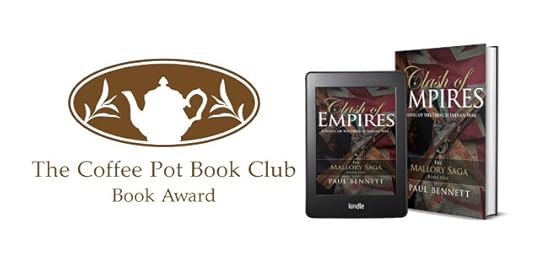
Clash of Empires: A Novel of the French Indian War (The Mallory Saga Book 1)By Paul Bennett
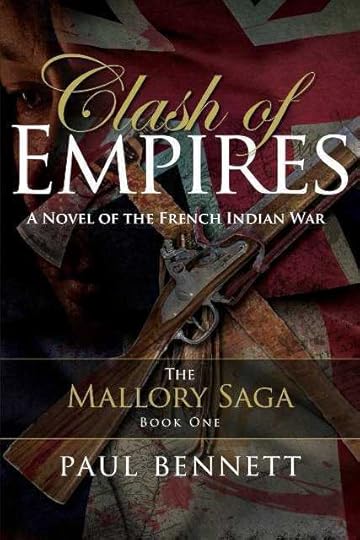
In 1756, Britain and France are on a collision course for control of the North American continent. The eventual result can be described as the first world war, known as the Seven Year’s War in Europe and the French and Indian War in the colonies. The Mallory family uproots from eastern Pennsylvania, and moves to the western frontier, where they find themselves in the middle of war. Daniel, Liam, and Liza (the three Mallory siblings) become involved in the conflict in ways that lead to emotional trauma for each. The story focuses on historical events and includes historical characters. Clash of Empires is an exciting look at the developments leading to the events of July 1776, which are chronicled in the sequel as we follow the exploits and fate of the Mallory clan.
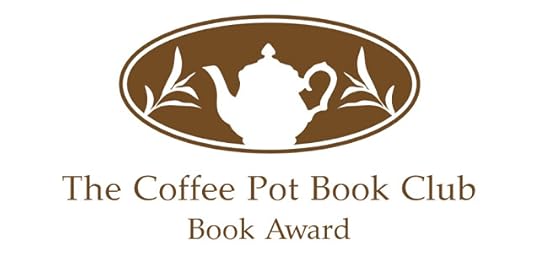
“If history teaches us anything, it is that it will repeat…”
Thomas Mallroy was not content with his life as a farmer. He wanted more. The frontier was the only place for someone like him. Thomas longed for the adventure and the freedom a trading post would bring.
But Thomas’ need for adventure comes at a terrible cost to his family. For the frontier was where the battle lines between the French and the British had been drawn. And as the local Indian tribes take sides, the frontier is no longer a place for an Irish-American and his family.
From the comfort of a small farm in eastern Pennsylvania to the horrors of The French and Indian War (1754–63) Clash of Empires (The Mallroy Saga #1) by Paul Bennett is a story of one family’s battle to stay alive in the midst of Hell.
Set in a wild yet beautiful landscape, The French and Indian Wars are captured in this magnificent retelling. Like a bard from days gone by, Bennett recounts the events of this terrible seven-year war through the eyes of the Mallroy family.
This untamed frontier is Liam Mallroy’s idea of freedom. He could breathe here. It is no wonder that his feet led him to the Mohawk tribe. Here, is where he belongs. Liam’s story really drives this book forwards. His tale is terribly tragic, yet strangely majestic. It is Liam's struggle, which takes Clash of Empires from being a great story to a future classic.
There is a huge cast of characters in this novel and yet, I never once had to look at the character list at the back of the book to keep track of them all. For a cast this size, it is easy to confuse the reader, but Bennett has masterful control. He has a firm grip on all of his characters, and they all bring something important to the narrative. Although the focus is on the Mallory family, Bennett gives the same attention to detail with regards to his supporting characters. The writing is vibrant and rich. Bennett’s descriptive prose was wonderful to read. The story was incredibly compelling. The chapters were long, but they were split up into very readable sections, which I think makes this lengthy book seem a lot shorter than what it actually was. Bennett’s retelling of the famous battles was skilfully done — he writes fabulous battle scenes.
As for the antagonists, and there are many in this book, Bennett has made a calculated decision to show both sides of the argument. So the story of Pontiac and his struggle against British military occupation certainly helps to give a broader understanding of what the Native Americans were facing and why they were fighting. The frontier was their home, and they were determined to keep it. But on the other hand, I didn’t want the protagonists to meet a gruesome end by a tomahawk. As a reader, it was interesting to feel so torn between the two sides. I wanted everyone to come out alive, maybe not so much in Chogan’s case, but I am not going to give away the plot, so I will leave that there.
I think this story can proudly sit alongside James Fenimore Cooper’s The Last of the Mohicans. Bennet writes in a similar style to Cooper. Of course, it is about the same era so if you have read or watched The Last of the Mohicans, then there are some names and battles that you will be familiar with. However, saying that, I thought Clash of Empires (The Mallroy Saga #1) brings something new to Historical Fiction about this war. I have to say that I thought his characterisation of a young Washington was amazing.
Clash of Empires (The Mallroy Saga #1) is simply unputdownable. This story is something very special. I, for one, cannot wait for book 2.
I Highly Recommend.
Review by Mary Anne Yarde.
The Coffee Pot Book Club
Amazon UK • Amazon US • IndieBound
Paul Bennett
 Paul’s education was of the public variety and when he reached Junior High he discovered that his future did not include the fields of mathematics or science. This was generally the case throughout his years in school as he focused more on his interest in history; not just the rote version of names and dates but the causes. Paul studied Classical Civilization at Wayne State University with a smattering of Physical Anthropology thrown in for good measure. Logically, of course, Paul spent the next four decades drawing upon that vast store of knowledge working in large, multi-platform data centers, and is considered in the industry as a bona fide IBM Mainframe dinosaur heading for extinction. Paul currently resides in the quaint New England town of Salem, Massachusetts with his wife, Daryl. The three children have all grown, in the process turning Paul’s beard gray, and have now provided four grandchildren; the author is now going bald.
Paul’s education was of the public variety and when he reached Junior High he discovered that his future did not include the fields of mathematics or science. This was generally the case throughout his years in school as he focused more on his interest in history; not just the rote version of names and dates but the causes. Paul studied Classical Civilization at Wayne State University with a smattering of Physical Anthropology thrown in for good measure. Logically, of course, Paul spent the next four decades drawing upon that vast store of knowledge working in large, multi-platform data centers, and is considered in the industry as a bona fide IBM Mainframe dinosaur heading for extinction. Paul currently resides in the quaint New England town of Salem, Massachusetts with his wife, Daryl. The three children have all grown, in the process turning Paul’s beard gray, and have now provided four grandchildren; the author is now going bald.For more information, please visit the Mallory Saga Facebook page. You can also find Paul on his Blog, Twitter, and Goodreads.
Published on November 16, 2018 22:30
November 15, 2018
A conversation with Historical Fiction author, Pam Lecky. #amwriting #HistoricalFiction #Victorian @pamlecky
A conversation with Historical Fiction author, Pam Lecky.

Please give a warm welcome to the fabulous, Pam Lecky. For my readers who may not be familiar with your work, would you mind telling us a little about yourself?
Thanks for inviting me on to your blog, Mary Anne. I am an Irish author of historical fiction, based in Dublin, Ireland. Although I have been writing most of my life, it was only three years ago that I took the plunge and self-published my debut novel, The Bowes Inheritance. Since then I have been on this amazing journey, getting to know the publishing world and meeting the most wonderful writers from many different genres. The icing on the cake was signing with the Hardman & Swainson Literary Agency earlier this year.
It is an absolute pleasure to have you on the blog, Pam. Can you tell us what inspired you to write the The Bowes Inheritance?
The idea for Bowes had been shifting about in my head for ages and when I started to write, the story just took over. The original premise was a young woman inheriting a property and having to fight to keep it. I deliberately set it in a place and time where an Irishwoman would be at a disadvantage both socially and politically. This set up a nice bit of conflict between the two main protagonists, Louisa and Nicholas.
It had a beginning, a middle and an end (always a good thing!), but there was no flesh to its bones. I knew I wanted it to have an Irish flavour, but with a new angle. I have always been fascinated by the complex relationship between the Irish Ascendency and their British counterparts and that, and a wrangle over land, seemed a good place to start. It was only as I started to research, that the story took on a life of its own. Sub-plots popped up, often influenced by real events that I read about from old newspapers, books and on-line blogs. What started out primarily as a love story became tangled up in Irish history, Fenians and the English Lake District! The Bowes Inheritance was born.
Bowes has done very well, being awarded the B.R.A.G. Medallion; shortlisted for the Carousel Aware Prize; and, longlisted by the Historical Novel Society.
Congratulations on your fabulous awards! Well deserved! Keeping on the subject of writing, how did you come up with your setting, and your characters?
I have always been a voracious reader of historical fiction and although I love Regency my greatest interest is the late Victorian era and early 20th century. I find these periods in history totally fascinating, so it was no surprise that the characters and settings naturally fitted into that time.
Oddly enough it was family history that led me to set the book in Cumbria (then Cumberland). I have a huge love of the sea and coastal areas but I didn’t want to set my book in Cornwall (overdone I felt). I had found a link to Carlisle while investigating some errant family members and once I took a look at the scenery (both coastal and of course the magnificent lakes), I was hooked. The setting for the inherited property is fictional, although I do use some real places as well, i.e., the fabulous Lake Buttermere, which I was lucky enough to visit in 2016.
 Lake Buttermere
Lake ButtermereThe characters are pure fiction, but I will admit my antagonist, Jack Campbell, is based very loosely on real life Fenians. The two main protagonists, Louisa Campbell and Nicholas Maxwell, were influenced by my love of characters created by Georgette Heyer and Elizabeth Gaskell. Their relationship begins on a sour note but gradually, as they begin to understand each other, it leads to romance.
So many authors say they found their inspiration from event that happened in this own lives. As you know, there are many books in the historical mystery/suspense genre. What three things set your story apart?
Firstly, because of my love of research, I choose to include a topic such as the Fenian dynamite campaign and make it an important element of the plot. I really wanted my book to be authentic, not purely a romance, but a comment on the times. Hopefully, the reader will come away with a feel for the struggles of poorer classes, not just the well-to-do. I feature the notorious ‘Angel Meadow’ area in Manchester, based on real life accounts. With a couple of exceptions, most of the historical events in the book are true to life, even down to actual dates.
I wanted my heroine to be strong and not reliant on a man to get her out of tight situations. Without giving away the plot, Louisa rises above many challenges to free herself from the past and overcome her foes.
Lastly, I did my best to inject humour into the book and above all, it was written to entertain and not to be taken too seriously. If I can move people to laugh and cry, I’ve done my job!
Your book sounds amazing. Could you tell us what you are currently working on?
Earlier this year I published an anthology of short stories, Past Imperfect. Most of the stories are historical, a couple are ghost stories and one is a memoir. I really enjoyed writing these stories, some which may become novels at a later date.
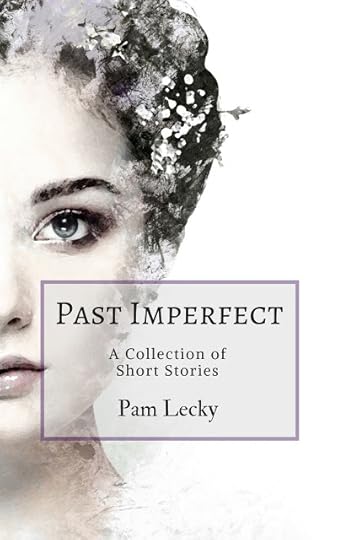 Amazon
AmazonSince then, I have been working on a series of late Victorian mysteries, centred on a female character, Lucy Lawrence, a widow who finds herself embroiled in the crimes of her late husband and has to outwit a London crime lord and a private investigator to find some stolen gems. The first book in the series, No Stone Unturned, is currently being promoted by my agent and is out with commissioning editors looking for a publisher.
Whilst waiting, I am working on the second book in the series, Footprints in the Sand, which is set in Egypt in 1887 and centres around the black market for Egyptian artefacts, feuding French and English Egyptologists and a murder. I’m having a ball with this book as I love everything to do with Ancient Egypt; so much so I have to keep pulling myself away from the research to get something down on paper!
The third book, as yet unnamed, will be set in Italy. This too will involve extensive research, including a trip to Lake Como (poor me - what I have to put up with for my art!!). OK, I admit it - any excuse to visit Italy! These three books will keep me out of mischief for some time.
Thanks again, Mary Anne, for hosting me today.
The Bowes Inheritance
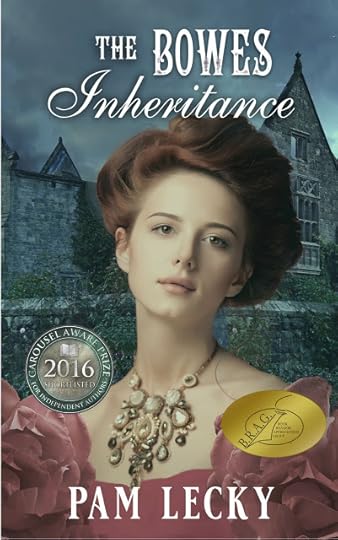
Amazon
Excerpt
Alex Maxwell lifted his head from his hand and tried to focus on the player across the table. As his vision cleared, his whiskey-addled mind struggled to follow. The man’s eyes were hard and unyielding but there was the suggestion of humour there too; but at his expense. Everything about the man suggested the gentleman. He was convivial and charming, spoke with a cultivated accent and was dressed with quiet elegance. But there was just something about him that Alex didn’t trust. Until the last few hands he had shown no great skill at the cards, but Alex had noticed that as the stakes had gradually increased, so had the man’s luck.
Fumes of alcohol and tobacco were making Alex feel nauseous and his hands were slick with sweat as he picked up his cards. His eyes momentarily rested on the piece of paper in the centre of the table, where he had placed it, minutes before. It was utter folly to pledge one of his properties as a bet, but some sort of madness was driving him tonight. He looked at his cards one last time – three queens and two aces – a great hand, but was it good enough? Slowly he revealed his cards, his stomach churning, because he knew he had bluffed once too often.
From the bar came the rumble of talk and laughter, but silence dominated the cramped and darkened backroom where the men were playing.
“I believe my hand wins, my friend,” the man across the table said. He placed his cigar in an ashtray before laying the cards down on the table in a leisurely and confident manner.
Four kings.
Those around the table, who had had the good fortune to fold early, drew in a collective breath of reverence; whoever this man was, he was damn good.
Alex felt the room spin as all eyes fell on him, most full of pity, one pair brimming with derision.
“Where is this godforsaken place, anyway? I hope it’s a decent bit of land,” the stranger said, breaking into the stunned silence. He reached for the bottle of Bushmills and poured himself a glass with surprisingly steady hands; earlier in the evening he had given the impression of being quite inebriated. With an ironic twist of his mouth, he offered to refill Alex’s glass.
Alex shook his head. His tongue felt thick, dry and uncooperative. “It’s down the coast from here, three miles from Newton.” He felt his hands tremble; to lose such a fine farm in a game of chance was unconscionable. But he was an honourable man and he had willingly entered the game. His opponent had not cheated – as far as he knew.
“Never heard of it!” exclaimed the stranger. He eyed Alex shrewdly before leaning back in his chair. “I hope it is worth what you claim.”
Alex glared back at him in horror. “Who are you, sir?”
“Jack Campbell – at your service,” the man said, with a mocking nod of his head. “Perhaps we will become better acquainted now that we will be neighbours.”
Alex drew a ragged breath. Had he really just lost Bowes Farm to this man? His family would never forgive him and, most importantly, he would never forgive himself.
Pam Lecky
 Pam Lecky is an Irish historical fiction author, writing crime, mystery and romance. She is a member of the Historical Novel Society, the Society of Authors and has a particular love of the late Victorian era/early 20th Century. Her debut novel, The Bowes Inheritance, was awarded the B.R.A.G Medallion; shortlisted for the Carousel Aware Prize 2016; and long-listed for the Historical Novel Society 2016 Indie Award. Her short stories are available in an anthology, entitled Past Imperfect, which was published in April 2018. She is currently working on her next couple of novels, a Victorian mystery series. She has recently been signed with the Hardman & Swainson Literary Agency in London.
Pam Lecky is an Irish historical fiction author, writing crime, mystery and romance. She is a member of the Historical Novel Society, the Society of Authors and has a particular love of the late Victorian era/early 20th Century. Her debut novel, The Bowes Inheritance, was awarded the B.R.A.G Medallion; shortlisted for the Carousel Aware Prize 2016; and long-listed for the Historical Novel Society 2016 Indie Award. Her short stories are available in an anthology, entitled Past Imperfect, which was published in April 2018. She is currently working on her next couple of novels, a Victorian mystery series. She has recently been signed with the Hardman & Swainson Literary Agency in London.Pam loves to hear from readers, you can find her: AmazonFacebookTwitterwww.pamlecky.comGoodreads
Published on November 15, 2018 23:00
#NewRelease — Caligula by Simon Turney #AncientRome #HistoricalFiction @SJATurney
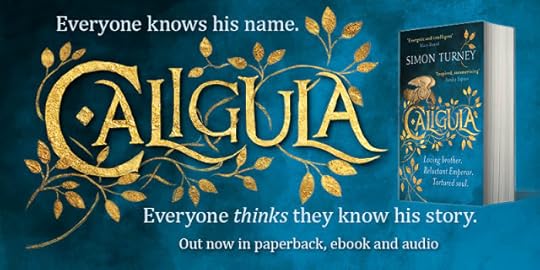
Caligula
By Simon Turney
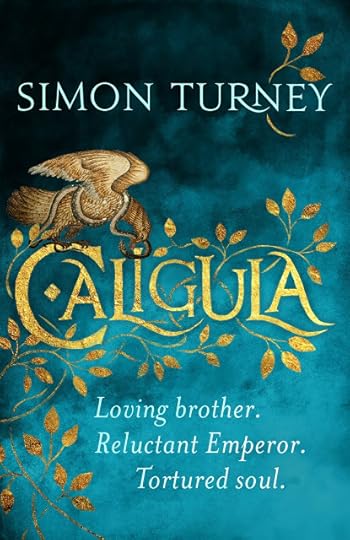
Rome 37AD. The emperor is dying. No-one knows how long he has left. The power struggle has begun.
When the ailing Tiberius thrusts Caligula's family into the imperial succession in a bid to restore order, he will change the fate of the empire and create one of history's most infamous tyrants, Caligula.But was Caligula really a monster?
Forget everything you think you know. Let Livilla, Caligula's youngest sister and confidante, tell you what really happened. How her quiet, caring brother became the most powerful man on earth.
And how, with lies, murder and betrayal, Rome was changed for ever . . .
Book Depository
Simon Turney
 A born and bred Yorkshireman with a love of country, history and architecture, Simon spends most of his rare free time travelling around ancient sites, writing, researching the ancient world and reading voraciously.
A born and bred Yorkshireman with a love of country, history and architecture, Simon spends most of his rare free time travelling around ancient sites, writing, researching the ancient world and reading voraciously.Following an arcane and eclectic career path that wound through everything from sheep to Microsoft networks and from paint to car sales, Simon wrote Marius' Mules. Now, with in excess of twenty novels under his belt, Simon writes full time. He lives with his wife and children and a menagerie of animals in rural North Yorkshire.
Find Simon: Website • Blog • Facebook • Twitter.
Published on November 15, 2018 06:39
November 14, 2018
Emma of Normandy, Twice-Crowned Queen of England by Sharon Bennett Connolly #History #Norman #Viking @Thehistorybits
Emma of Normandy, Twice-Crowned Queen of EnglandBy Sharon Bennett Connolly
Two years ago, in 1016, the story of the Norman Conquest was all over the news – it was the 950th anniversary of the fateful year, when Halley’s Comet was seen in the skies, three kings died on English soil (2 in battle), one invasion was repelled and a second succeeded. I remember watching the progress of the English Heritage re-enactors, who marched from Stamford Bridge near York to Hastings in Sussex. They were following in the footsteps of King Harold II himself, marching from victory at Stamford Bridge to defeat and death at Hastings.
And I remember thinking, what about the women?
The focus was always on the men, the soldiers and kings. However, men didn’t do this alone.
No, the women didn’t fight, and it is often hard to discern their presence and influence on events; but they were there and so I determined to discover their stories and place them in the context of the events of, not only, 1066, but also in the years leading up to and following that fateful year.
One woman, in particular, stands out as the matriarch of the period: Emma of Normandy.

Detail of a miniature of Queen Emma before an altar. British Library
As wife of both Æthelred II and King Cnut, Emma of Normandy was the lynchpin of the story of the 11th century. As a Norman, and the mother of both a Danish king of England and a Saxon King of England, it was Emma who bound all three sides together in the conflict of 1066. Her story is suitably dramatic; with exile, tragedy and scandal all playing their part, starkly contrasting with the wealth and privilege of her role as the only twice-crowned Queen of England.
Emma was the daughter of Richard I, Duke of Normandy, and his wife, Gunnora. Born in around 985/987, she was married to Æthelred at Winchester on 5 April 1002, at which time she was given the English name Ælfgifu, although in the Anglo-Saxon Chronicle she is often referred to, simply, as ‘The Lady’. Her marriage with Æthelred was an attempt to seal a peace between England and Normandy, and to persuade the Normans not to allow the Viking raiders to winter in their lands between raids into England. Although the Vikings continued to shelter in Normandy during the winter, and raiding into England continued throughout the early years of the 11thcentury, the marriage was a success in that it produced two more sons and a daughter for Æthelred; a second family considering he was the father of as many as thirteen children by his first wife, Ælfgifu of York, including at least six sons.
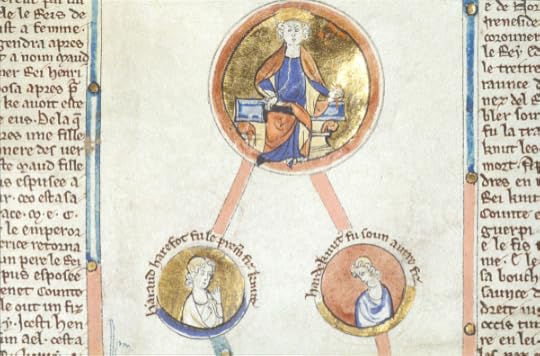
Genealogical Chronicle of the English Kings: Detail from the roll of Cnut, king of England, Denmark, and Norway, and his sons Harald Harefoot and Harthacnut. British Library
Of Emma and Æthelred’s two sons the eldest, Edward, would eventually succeed his half-brother, Harthacnut, to the English throne in 1042, ruling until his death on 5 January 1066. Edward’s younger brother, Alfred, was cruelly murdered during the reign of his step-brother, Harold I Harefoot. Harold was the son of Cnut by his first, handfast wife, Ælfgifu of Northampton. Alfred had arrived in England in 1036, ostensibly to visit his mother, though there are also theories that he intended to mount a challenge for the throne, and was welcomed by Earl Godwin of Wessex. However, his party were ambushed whilst being entertained by Godwin and Alfred was seized and taken to the abbey at Ely in Cambridgeshire, where he was later blinded and either murdered, or succumbed to his wounds. Either way, he died on 5 February 1037 and was buried in Ely Cathedral. Edward and Alfred’s sister, Goda (or Godgifu), was married firstly to Drogo, Count of Mantes and, secondly to Eustace II, Count of Boulogne. One of her sons by Drogo, Ralph, was made Earl of Hereford by his uncle, Edward, but earned himself the insulting nickname Ralph the Timid after fleeing the Welsh in battle.
As the Viking raids increased throughout the 1010s, Æthelred’s position on the throne proved precarious and he sent his wife and her young sons to Normandy for safety, before being forced into exile there himself in 1013, when Sweyn Forkbeard seized the throne. Sweyn’s death in 1014 offered Æthelred a way back and he sent Edward to England to negotiate his return with the English Witan, who invited Æthelred to resume the throne ‘if he would govern them better than he did before’. [1] Despite his promises, Æthelred proved just as inept before, failing to defeat the Danish invaders, led by Cnut. Æthelred died just two years later, on 23 April 1016, and was succeeded by his oldest surviving son by his first wife, Edmund II Ironside. Although Edmund put up a valiant fight against the Danish invaders, led by Cnut, a summer of fighting took its toll and he died on 30 November 1016.
Cnut took control of the whole of England and one of his first actions was to send for Emma, who he married on 2 July 1017. Although Emma appears to have had little influence during the reign of her first husband, her marriage with Cnut appears to have been more of a partnership. She was a more visible figure in public, enjoying considerable influence at court and offering substantial patronage to the church. She gave Cnut three children including a son, Harthacnut, and two daughters, one who’s name is lost, died aged 8 and is buried in Bosham, Sussex. A second daughter, Gunhilda, married Henry III, Emperor of Germany. When Cnut died in 1035 Emma was in England and retired to her manor in Winchester, taking the royal treasury with her in the hope she could pass it to her son, Harthacnut. However, Harthacnut was in Denmark and it was Harold Harefoot, one of Cnut’s sons by Ælfgifu of Northampton, who seized the initiative. An agreement was reached whereby the half-brothers ruled as co-kings with Emma acting for Harthacnut and ruling in Wessex. However, two years later Harthacnut had still not returned to England and Harold took the crown for himself, driving Emma into exile with Count Baldwin in Flanders.
 Miniature of King Cnut and Emma of Normandy before a large gold cross on an altar. British Library.
Miniature of King Cnut and Emma of Normandy before a large gold cross on an altar. British Library.Harthacnut appears to have been, by far, Emma’s favourite child. It was for his accession to the English throne that she schemed, rather than for her eldest son, Edward. In the early months of 1040 she and Harthacnut were preparing to invade England when they heard of Harold’s death. Harthacnut succeeded to the English throne without a fight and a year later invited Edward, who had spent almost 25 years in Norman exile, to join him in England as his successor.
Harthacnut reigned for just ten days short of two years, he died after collapsing during a wedding celebration at Lambeth. He was buried alongside his father in the old minster at Winchester and Emma gave the head of St Valentine to the new minster for her son’s soul. Emma’s relationship with Edward, however, was more strained than that she experienced with Harthacnut. Years of separation and a strong sense of abandonment on Edward’s part cannot have helped the situation. Following his coronation in 1043, one of Edward’s first actions was to ride to Winchester and take charge of the Treasury, which had been left in his mother’s hands by Harthacnut. Accompanied by the three greatest earls of his realm – Siward, Godwin and Leofric – ‘they deprived her of all the treasure that she had; which were immense; because she was formerly very hard upon the king her son, and did less for him than he wished before he was king…’ [2]
Emma’s friend and close adviser, Bishop Stigand, was deprived of his bishopric, although he was later reinstated and created Bishop of Winchester. He eventually rose to be Archbishop of Canterbury but was removed from office by William the Conqueror. However, at the time of her disgrace, Emma and Stagand’s close relationship gave rise to a later legend that they were more than friends and that Emma was accused of adultery with Stigand (although the 13th century story claimed the bishop’s name was Ælfwine). There is no contemporary evidence of the story, however, and it first appears around 200 years later. The story went that Emma was accused of adultery and required to walk across red-hot ploughshares in order to prove her innocence. Being neither cut nor burned by the instruments she was declared innocent. As a consequence, Emma was welcomed back into the royal circle by a contrite Edward.

Genealogical Chronicle of the English Kings: Rollo, Duke of Normandy, and his descendants, and William the Conqueror. British Library
Although the story is almost certainly a fabrication, Emma was eventually reconciled with Edward, although she enjoyed a much less exalted position as the king’s mother than she had when Harthacnut reigned. She eventually retired to her own estates, living away from the limelight until her death on 6 March 1052. She was buried in the old minster at Winchester, alongside her second husband, Cnut and her favourite son, Harthacnut. Emma’s story forms the basis for the book Encomium Emmae Reginae, which provides a significant insight into English politics for the first half of the 11th century.
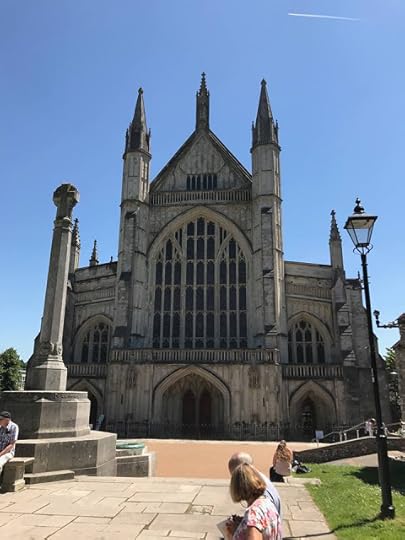
Winchester Cathedral, Anne Marie Bouchard
Emma had played a pivotal role in English politics in the first half of the 11th century, the effects of which would lead to the fateful events of 1066. She helped to shape the events from which the unique situation of the Norman Conquest would arise. A prominent figure, particularly in the reigns of Cnut and Harthacnut, she was the most distinguished woman of her time. More than any other single person, Emma’s story provides the background to the Norman Conquest through the political and personal relationships formed in the first fifty years of the century.
Footnotes: [1] The Anglo-Saxon Chronicle translated by James Ingram; [2] ibid.
Heroines of the Medieval World
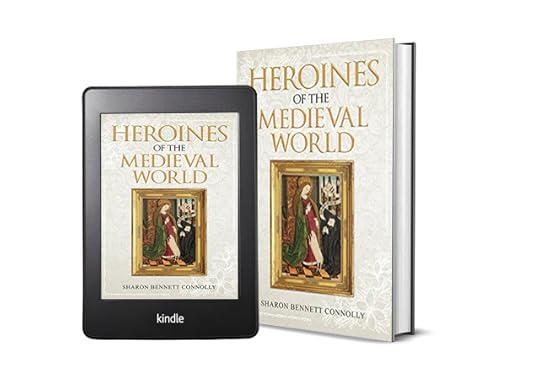
These are the stories of women, famous, infamous and unknown, who shaped the course of medieval history. The lives and actions of medieval women were restricted by the men who ruled the homes, countries and world they lived in. It was men who fought wars, made laws and dictated religious doctrine. It was men who were taught to read, trained to rule and expected to fight. Today, it is easy to think that all women from this era were downtrodden, retiring and obedient housewives, whose sole purpose was to give birth to children (preferably boys) and serve their husbands. Heroines of the Medieval World looks at the lives of the women who broke the mould: those who defied social norms and made their own future, consequently changing lives, society and even the course of history.Some of the women are famous, such as Eleanor of Aquitaine, who was not only a duchess in her own right but also Queen Consort of France through her first marriage and Queen Consort of England through her second, in addition to being a crusader and a rebel. Then there are the more obscure but no less remarkable figures such as Nicholaa de la Haye, who defended Lincoln Castle in the name of King John, and Maud de Braose, who spoke out against the same king’s excesses and whose death (or murder) was the inspiration for a clause in Magna Carta.Women had to walk a fine line in the Middle Ages, but many learned to survive – even flourish – in this male-dominated world. Some led armies, while others made their influence felt in more subtle ways, but all made a contribution to their era and should be remembered for daring to defy and lead in a world that demanded they obey and follow.
Amazon US • Amazon UK
Silk and the Sword: The Women of the Norman Conquest
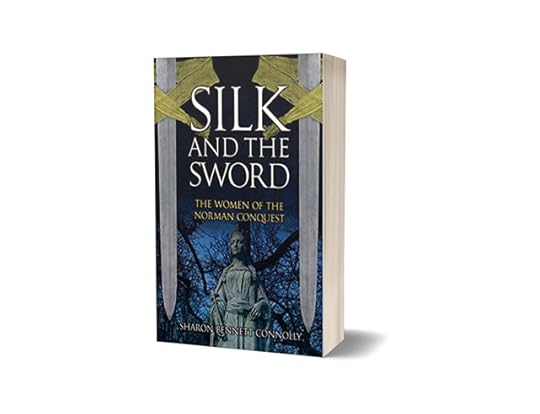 Everyone knows about the events of 1066, the story of invasion and conquest. But what of the women? Harold II of England had been with Edith Swan-neck for 20 years but in 1066, in order to strengthen his hold on the throne, he married Ealdgyth, sister of two earls. William of Normandy’s duchess, Matilda of Flanders had, supposedly, only agreed to marry the Duke after he’d pulled her pigtails and thrown her in the mud. Harald Hardrada had two wives—apparently at the same time. So, who were these women? What was their real story? And what happened to them after 1066? From Emma of Normandy, wife of both King Cnut and Aethelred II to Saint Margaret, a descendant of Alfred the Great himself, Silk and the Sword traces the fortunes of the women who had a significant role to play in the momentous events of 1066.
Everyone knows about the events of 1066, the story of invasion and conquest. But what of the women? Harold II of England had been with Edith Swan-neck for 20 years but in 1066, in order to strengthen his hold on the throne, he married Ealdgyth, sister of two earls. William of Normandy’s duchess, Matilda of Flanders had, supposedly, only agreed to marry the Duke after he’d pulled her pigtails and thrown her in the mud. Harald Hardrada had two wives—apparently at the same time. So, who were these women? What was their real story? And what happened to them after 1066? From Emma of Normandy, wife of both King Cnut and Aethelred II to Saint Margaret, a descendant of Alfred the Great himself, Silk and the Sword traces the fortunes of the women who had a significant role to play in the momentous events of 1066.Amazon US • Amazon UK
Sharon Bennett Connolly
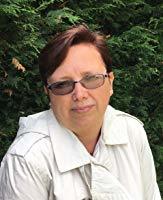 Sharon Bennett Connolly has been fascinated by history for over 30 years. She has a BA honours degree in History, Business and Law and has worked as a tour guide at historical sites. Her blog, History … the Interesting Bits, concentrates on (but is not confined to) the medieval period and the lesser-known people and events of history. Her first book, Heroines of the Medieval World was released in September 2017 and her second book, Silk and the Sword: the Women of the Norman Conquest is out November 2018. Sharon loves to hear from readers, you can find her: Blog • Facebook • Twitterp.p1 {margin: 0.0px 0.0px 0.0px 0.0px; font: 16.0px Calibri; -webkit-text-stroke: #000000} span.s1 {font-kerning: none} p.p1 {margin: 0.0px 0.0px 0.0px 0.0px; font: 16.0px Calibri; -webkit-text-stroke: #000000} span.s1 {font-kerning: none} p.p1 {margin: 0.0px 0.0px 0.0px 0.0px; font: 16.0px Calibri; -webkit-text-stroke: #000000} span.s1 {font-kerning: none} p.p1 {margin: 0.0px 0.0px 0.0px 0.0px; font: 16.0px Calibri; -webkit-text-stroke: #000000} span.s1 {font-kerning: none} p.p1 {margin: 0.0px 0.0px 0.0px 0.0px; font: 16.0px Calibri; -webkit-text-stroke: #000000} span.s1 {font-kerning: none; color: #4787ff; -webkit-text-stroke: 0px #4787ff} span.s2 {font-kerning: none} span.s3 {font: 19.0px Calibri; font-kerning: none}
Sharon Bennett Connolly has been fascinated by history for over 30 years. She has a BA honours degree in History, Business and Law and has worked as a tour guide at historical sites. Her blog, History … the Interesting Bits, concentrates on (but is not confined to) the medieval period and the lesser-known people and events of history. Her first book, Heroines of the Medieval World was released in September 2017 and her second book, Silk and the Sword: the Women of the Norman Conquest is out November 2018. Sharon loves to hear from readers, you can find her: Blog • Facebook • Twitterp.p1 {margin: 0.0px 0.0px 0.0px 0.0px; font: 16.0px Calibri; -webkit-text-stroke: #000000} span.s1 {font-kerning: none} p.p1 {margin: 0.0px 0.0px 0.0px 0.0px; font: 16.0px Calibri; -webkit-text-stroke: #000000} span.s1 {font-kerning: none} p.p1 {margin: 0.0px 0.0px 0.0px 0.0px; font: 16.0px Calibri; -webkit-text-stroke: #000000} span.s1 {font-kerning: none} p.p1 {margin: 0.0px 0.0px 0.0px 0.0px; font: 16.0px Calibri; -webkit-text-stroke: #000000} span.s1 {font-kerning: none} p.p1 {margin: 0.0px 0.0px 0.0px 0.0px; font: 16.0px Calibri; -webkit-text-stroke: #000000} span.s1 {font-kerning: none; color: #4787ff; -webkit-text-stroke: 0px #4787ff} span.s2 {font-kerning: none} span.s3 {font: 19.0px Calibri; font-kerning: none}
Published on November 14, 2018 23:00
November 13, 2018
The Once and Future Lancelot by Carol Anne Doug #Giveaway #Arthurian #Legends @CarolAnneDougl1
Published on November 13, 2018 23:00
November 12, 2018
A conversation with Historical Fiction author, Chris Bishop. #amwriting #Vikings #Saxons #HistoricalFiction @CBishop_author
A conversation with Historical Fiction author, Chris Bishop.
 It is with the greatest of please I welcome the fabulous Chris Bishop back onto the blog. Chris, could you tell us a little bit about yourself?Hi, Mary, it is great to be back. For your readers who may not know who I am, my name is Chris Bishop and I’m an author with a particular interest in historical fiction. My principal work includes a series entitled The Shadow of the Raven which is set at the time of Alfred the Great.After a successful career as a Chartered Surveyor, I retired to fulfil my lifelong ambition to write a novel, combining that with my interest in Anglo Saxon history which started when I first read Hereward the Wake at school.The first book in my series (
Blood and Destiny
) was published in 2017 and the second, (
The Warrior with the Pierced Heart
) in July this year. The third part (
The Final Reckoning
) will be published in the Spring 2019.My other interests include travel, windsurfing and fly fishing – perhaps even one day combining all three on a beautiful tropical beach, sailing when it’s windy and fishing when it’s not… (If only!)
It is with the greatest of please I welcome the fabulous Chris Bishop back onto the blog. Chris, could you tell us a little bit about yourself?Hi, Mary, it is great to be back. For your readers who may not know who I am, my name is Chris Bishop and I’m an author with a particular interest in historical fiction. My principal work includes a series entitled The Shadow of the Raven which is set at the time of Alfred the Great.After a successful career as a Chartered Surveyor, I retired to fulfil my lifelong ambition to write a novel, combining that with my interest in Anglo Saxon history which started when I first read Hereward the Wake at school.The first book in my series (
Blood and Destiny
) was published in 2017 and the second, (
The Warrior with the Pierced Heart
) in July this year. The third part (
The Final Reckoning
) will be published in the Spring 2019.My other interests include travel, windsurfing and fly fishing – perhaps even one day combining all three on a beautiful tropical beach, sailing when it’s windy and fishing when it’s not… (If only!)Windsurfing and fly fishing as the same time? I think I would pay to watch that!! What inspired you to write your series?
That’s actually a very good question as the inspiration for the first book, Blood and Destiny , was really very strange. I was writing a short ghost story for a literary competition which was not a genre I’d ever attempted before. My plot centred on a group of archaeologists who’d discovered the grave of a boy in a very remote and lonely place. As the story developed, it became clear to me that the boy had his own tale to tell. His ‘ghost’ then seemed to hijack the story, pushing me into all sorts of places I’d not intended to go and inducing all manner of twists and turns along the way. The upside was that pretty soon his whole story came gushing out like… well, like all good stories should!The strange thing was that when I started to research the era in detail (Anglo Saxon England), I found that so much of what I’d jotted down fitted the perceived historical facts like a glove. Then, when I gave my ghost a name, (actually, I gave him two but you’ll have to read the book to find out why) he seemed to come to life and I realised that I was no longer writing a short story, I was writing a novel. Little did I realise then that it was actually the first part of a trilogy which followed the story of my ‘ghost’s’ life through what was a very turbulent time and also a key turning point in English history. There is more about this uncanny experience in my blog entitled Ghost Writer – The Hand that Guides the Pen .
That is an amazing story. It is wonderful how writing a short-story can lead on to bigger things. What were the challenges you faced in researching this period of history?
For me, the greatest challenge in writing about the so called ‘Dark Ages’ was establishing fact from fiction – not to mention folklore and legends! So much of what we think is fact has been distorted by intervening generations for both political and cultural reasons. There are also few contemporary first-hand accounts of what actually happened – and even fewer which can be regarded as unbiased. After all, history is written by the victor, not the vanquished and propaganda and fake news are nothing new.
Tell me about it! Researching the Dark Ages is notoriously difficult. There are many books about the Anglo Saxon era. Can you tell us three things that set your novels apart?
As a relatively new author, that’s a difficult one for me to answer. The reviews often refer to the fact that my novels are fast paced, include a lot of interesting detail and make the reader feel they’re actually there. I hope all that’s true as my love of creative writing combined with my lifelong interest in Anglo Saxon history compels me to entertain as well as inform.
Can you tell us what you are currently working on?
I’m currently completing Book Three in the series ( The Final Reckoning ) which should be published in the spring next year. I’m also researching the possibility of a fourth book though that may be the start of second series, albeit still set in Anglo Saxon England.In the meantime, I’m working on a number of blogs and articles which you can view on my websiteand where you can also sign up for my mailing list.
My Blogs include:
GHOST WRITER – THE HAND THAT GUIDES THE PEN – the story behind the origin of the series
SO, DID ALFRED REALLY BURN THE CAKES? – a discussion about the folklore surrounding Alfred the Great and an attempt to determine how much of it is true ALFRED AND THE VIKINGS – Alfred’s Troubled Realm is the first in a four part series based on my research which looks at some of the lesser known facts of this key turning point in English History. Part two – Who Were the Dreaded Vikings will be posted shortly. Please sign up to my mailing list HERE to learn more about my work and details of other blogs which I hope you will find of interest
Chris Bishop is the author of The Shadow of The Raven Series which is set in Anglo Saxon England at the time of Alfred the Great.
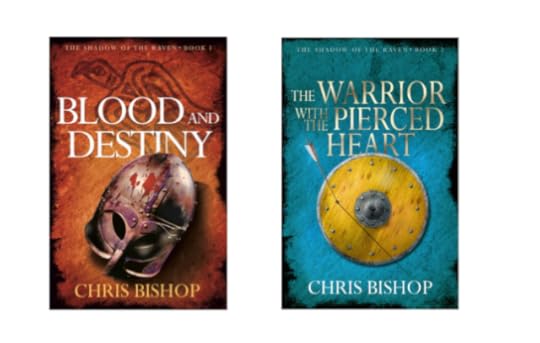
Book 1 Blood and Destiny and Book 2 The Warrior with the Pierced Heart are out now in paperback and ebook.Book 3 The Final Reckoning will be published spring 2019
 CHRIS IS A MEMBER OF THE HISTORICAL WRITERS’ ASSOCIATIONAND THE HISTORICAL NOVEL SOCIETYFind out more atwww.chrisbishopauthor.com you can also follow Chris on Twitter @CBishop_author
CHRIS IS A MEMBER OF THE HISTORICAL WRITERS’ ASSOCIATIONAND THE HISTORICAL NOVEL SOCIETYFind out more atwww.chrisbishopauthor.com you can also follow Chris on Twitter @CBishop_author
Published on November 12, 2018 23:00
A prophecy, a legend, the Dark Ages and a quiet thought… The inspiration behind The Du Lac Chronicles. #HistoricalFiction #DarkAges #KingArthur
The inspiration behind The Du Lac ChroniclesBy Mary Anne Yarde
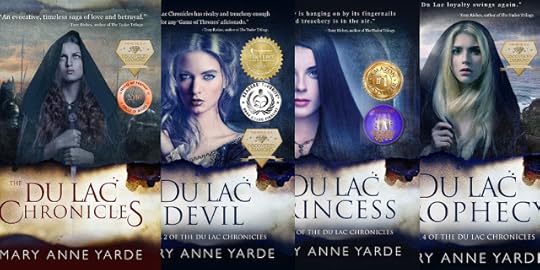
What inspired you to write your book?
This is a question authors are often asked. The answers can be surprising. Story ideas usually start out as a quiet thought which niggles in the back of your head. Over time, this quiet thought becomes louder and louder until it can no longer be ignored. That is how it was for me, anyway.
I have been fascinated with the life and times of King Arthur and his Knights of the Round Table since I was a child — I guess growing up a stone’s throw from Glastonbury (The Ancient Isle of Avalon) may have influenced me somewhat. In Glastonbury, you cannot get away from Arthur. He is everywhere. It is where his story ends — If you believe those 12th Century pragmatic monks of Glastonbury Abbey.
The story of King Arthur is a tragic one. Arthur’s wife has an affair with his best friend — the ultimate betrayal. But while Arthur is in Brittany fighting Lancelot, Mordred takes Arthur’s throne for himself. Arthur learns of Mordred treachery. He abandons his fight with Lancelot and sails back to Briton. Arthur and Mordred meet at Camlann. Both men are mortally wounded in the battle that takes place there. That is what the bards tell us, although with time the story has been added to, changed. In fact there is very little of the original story left. But I digress…
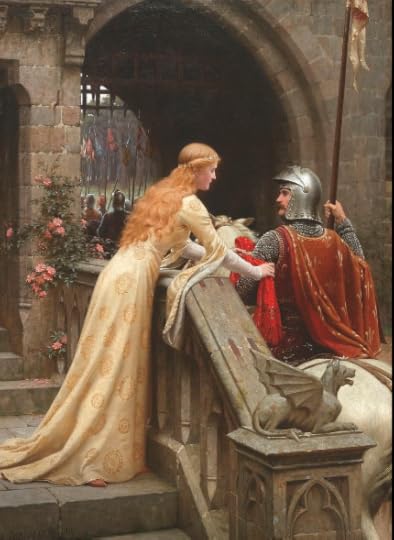 God's Speed! (1900) Edmund Leighton
God's Speed! (1900) Edmund LeightonThe King is dead…
And here Arthur’s story ends. This is also where the stories of his knights end. Everything ends at Camlann. Or does it?
After Camlann we are left with nothing but an empty throne and a prophecy. This prophecy states if Britain’s sovereignty were ever threatened then, Arthur and his Knights would ride again. Over a thousand years later and countless invasions, we are still waiting.
But what if the prophecy had already come to pass? What if we were all waiting for something which had already happened?
My series The Du Lac Chronicles explores this possibility. But this is no wild fantasy story that I have penned. There are no dragons or wizards in my books — not in the true sense of the word. There are, however, Druids and Christian monks who can perform miracles. And there are men who are as brave as dragons and sometimes just as cruel. You see I wanted my books to be firmly planted in the historical Dark Ages, and I wanted to keep it as real in the telling as I could. However, to depict the Dark Ages is no easy feat.
What happened that made the Dark Ages so…well, Dark?
Hold on to your hats, here comes the history lesson… The Dark Ages was a time of change. A drastic change. In 476 C.E. the last emperor of the Western Roman Empire had been overthrown. The stability which the Roman Empire had brought to Western Europe for over 1000 years was no more. Can you even begin to imagine what that must have been like?
This dawning new era brings us some of the most fascinating historical figures that ever lived. These are not legendary figures, far from it. They were genuine historical men and women — and have they got a story to tell!
My series is not confined to the white cliffs on the North Downs. The Du Lac Chronicles is as much a story of France as it is of England. I wanted this to be an epic retelling, and as I am now writing book 5, I guess that is what I have created.
So back to the history…
The Roman Empire has fallen — what now?
As the Empire began to crumble, one Roman commander turned his back on Rome, and he took some of his men with him. That commander’s name was Clovis. It was at the Battle of Soissons 486 C.E. where he faced the Roman Army he was once a part of. To everyone’s surprise, or maybe not, Clovis and his army won. But, Clovis’ ambition didn’t stop there. He wanted more. Roman Gaul and parts of Western Germany fell to him as well. He forged a new empire through blood, war, and marriage. He made Paris the capital of his new kingdom, and he was the first King of a united Frank (France).
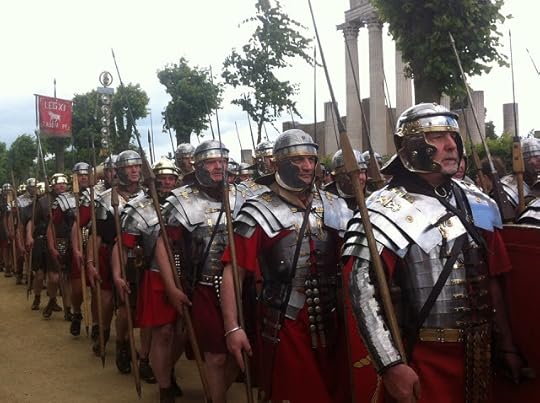
But Clovis was not the only one who hankered after new territory. The Saxons, Jutes, Angles, and not forgetting the Frisians, crossed the South Sea to take advantage of vulnerable Britain who, since the Romans had left, had split back into various smaller kingdoms. There was much infighting and unrest. It was the perfect opportunity for these invaders to come over and stake their claim to this rich and fertile land.
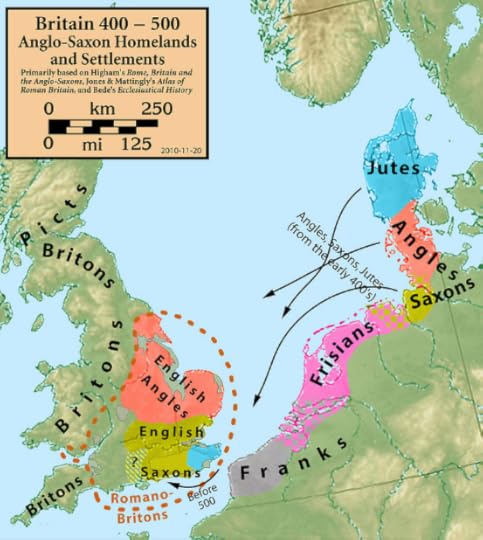 Britain 400–500: Anglo-Saxon Homelands and Settlements — Wikipedia
Britain 400–500: Anglo-Saxon Homelands and Settlements — WikipediaWhile all this was going on, the Church — the last remnant of the Western Empire — was creeping into the crevices, and spreading the word of God and, what could be considered of equal value, one language — Latin. It could be argued that it was the Church which united Britain in the end.
What else was dark about the Dark Ages?
It is called the Dark Ages because it lacks primary sources, and contrary to popular belief it wasn’t just because events were not recorded. Brittany is a perfect example of what happened to these precious manuscripts. One word. Vikings. Unfortunately for historians, and authors like myself, the Vikings did more than pillage. They destroyed our primary sources. How inconsiderate!
So what was I to do? The answer was simple. I used what written sources I could find. I visited many historical sites, watched countless documentaries, and listened to many lectures, but still, I needed more, and I realised that in my search for the perfect setting with the perfect historical characters I had been chasing my tail. I ended where I started. I was back with that quiet thought, that whispered legend. The Dark Ages may be reluctant to give up her past, but folklore was more than generous. I realised that folklore is its own particular brand of history. Historians often overlook it because well, folklore is just stories. But I concluded that you could tell a lot about a people by the stories they used to tell. So I decided to combine history with folklore, and The Du Lac Chronicles was conceived. That quite thought, that quiet whisper, turned into a story which I have lived and breathed for over fifteen years.
The Du Lac Prohecy(Book 4 of The Du Lac Chronicles)
Two Prophesies. Two Noble Households. One Throne.
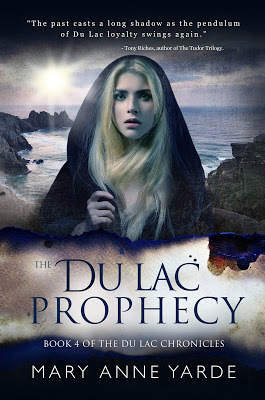 Distrust and greed threaten to destroy the House of du Lac. Mordred Pendragon strengthens his hold on Brittany and the surrounding kingdoms while Alan, Mordred’s cousin, embarks on a desperate quest to find Arthur’s lost knights. Without the knights and the relics they hold in trust, they cannot defeat Arthur’s only son – but finding the knights is only half of the battle. Convincing them to fight on the side of the Du Lac’s, their sworn enemy, will not be easy.
Distrust and greed threaten to destroy the House of du Lac. Mordred Pendragon strengthens his hold on Brittany and the surrounding kingdoms while Alan, Mordred’s cousin, embarks on a desperate quest to find Arthur’s lost knights. Without the knights and the relics they hold in trust, they cannot defeat Arthur’s only son – but finding the knights is only half of the battle. Convincing them to fight on the side of the Du Lac’s, their sworn enemy, will not be easy.If Alden, King of Cerniw, cannot bring unity there will be no need for Arthur’s knights. With Budic threatening to invade Alden’s Kingdom, Merton putting love before duty, and Garren disappearing to goodness knows where, what hope does Alden have? If Alden cannot get his House in order, Mordred will destroy them all.
Amazon

Mary Anne Yarde
 Mary Anne Yarde is the multi award-winning author of the International Bestselling series — The Du Lac Chronicles.
Mary Anne Yarde is the multi award-winning author of the International Bestselling series — The Du Lac Chronicles.Yarde grew up in the southwest of England, surrounded and influenced by centuries of history and mythology. Glastonbury — the fabled Isle of Avalon — was a mere fifteen-minute drive from her home, and tales of King Arthur and his knights were a part of her childhood.
Mary Anne loves to hear from readers, you can find her:
Media Links: Website/Blog • Facebook • Twitter • Amazon Author Page • Goodreads
Mary Anne Yarde is the award-winning author of the Bestselling series — The Du Lac Chronicles.
Published on November 12, 2018 09:11
The Coffee Pot Book Club
The Coffee Pot Book Club (formally Myths, Legends, Books, and Coffee Pots) was founded in 2015. Our goal was to create a platform that would help Historical Fiction, Historical Romance and Historical
The Coffee Pot Book Club (formally Myths, Legends, Books, and Coffee Pots) was founded in 2015. Our goal was to create a platform that would help Historical Fiction, Historical Romance and Historical Fantasy authors promote their books and find that sometimes elusive audience. The Coffee Pot Book Club soon became the place for readers to meet new authors (both traditionally published and independently) and discover their fabulous books.
...more
...more
- Mary Anne Yarde's profile
- 159 followers



